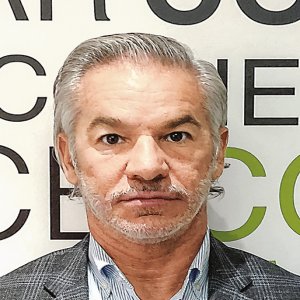Joint Global Action Needed to Stem Climate Change

STORY INLINE POST
Climate change is the most significant threat the world and humanity has ever faced, says Natalia Lever, Regional Director of Climate Reality Project, an international organization that seeks to catalyze solutions to stop this phenomenon. “Climate Reality Project’s goal is to empower citizens by providing them with information about climate change. We have over 17,000 members. This means 17,000 people talking about climate change and helping decisionmakers take notice of the problem in over 149 countries.”
According to Lever, climate change can only be addressed through joint actions, although countries must take individual measures to reduce their greenhouse emissions. This joint commitment resulted in the Paris Agreement, in which Mexico assumed a leadership role. “Mexico’s participation in the Paris Agreement was historic given the ambitious commitments it subscribed to and how it opened the door for more developing countries to commit themselves in an important way.”
Mexico has also put action to words, Lever says, creating a number of entities to help it achieve its goals. “Mexico has developed several institutions to address climate change. We have a general law, state laws, a fund and a council to help with the fight. The country also has several inter-ministerial entities in charge of complying with the Paris Agreement commitments, which puts us in a viable context to comply with our objectives,” she says.
Lever highlights two specific points regarding Mexico’s determination to see its commitments to fruition: the energy transition and the carbon market, although there is still a considerable way to go. “We have made progress in this regard but much remains to be done. Industries need to better understand the benefits of renewable energies and there is no clarity regarding the national market’s conditions for this new type of energy.”
The carbon trading market is another important piece of the puzzle. “The market will offer an important incentive for companies because it directly impacts competitiveness,” Lever says. The market will force companies to either reduce their carbon emissions or pay more to keep business as usual. “Each company will decide how much it wants to invest. In the long run, it will be more profitable to reduce carbon emissions than to continue paying to maintain current emissions.”
Lever says renewable energy solutions must also be available to the overall population. “We do not necessarily need big solar farms to produce clean energy in cities. We could use the roofs of buildings and houses for solar panels. The important thing is to give people the opportunity to choose the source of the energy they consume.”
Contrary to popular belief, renewable energy projects have become profitable for businesses and accessible to consumers, Lever says. “A few years ago, this was an expensive technology but prices have come down. It is no more expensive than what we have now and it is even more economical when compared with the costs of pollution and its consequences.” She points out that it would be even cheaper for the government if subsidies applied to electricity were used to pay for solar cells or energy efficiency technologies. “The government would stop paying the subsidy once the asset is completely paid.”
Businesses and the government must remember that complying with the commitments of the Paris Agreement requires a coordinated action between the public and private sectors, Lever adds. “The industry needs to understand the benefits of having economic practices without negative externalities.” Lever also says the government must double its efforts to go beyond the institutional framework. “The government needs to create a roadmap that allows us to know which industrial and economic sectors need to participate and how they will do it.”
Despite the threat that climate change poses, Lever says that it is not too late to do something, “We like to say that the sustainable revolution has the same power as the industrial revolution but with the speed of the technology revolution.”























